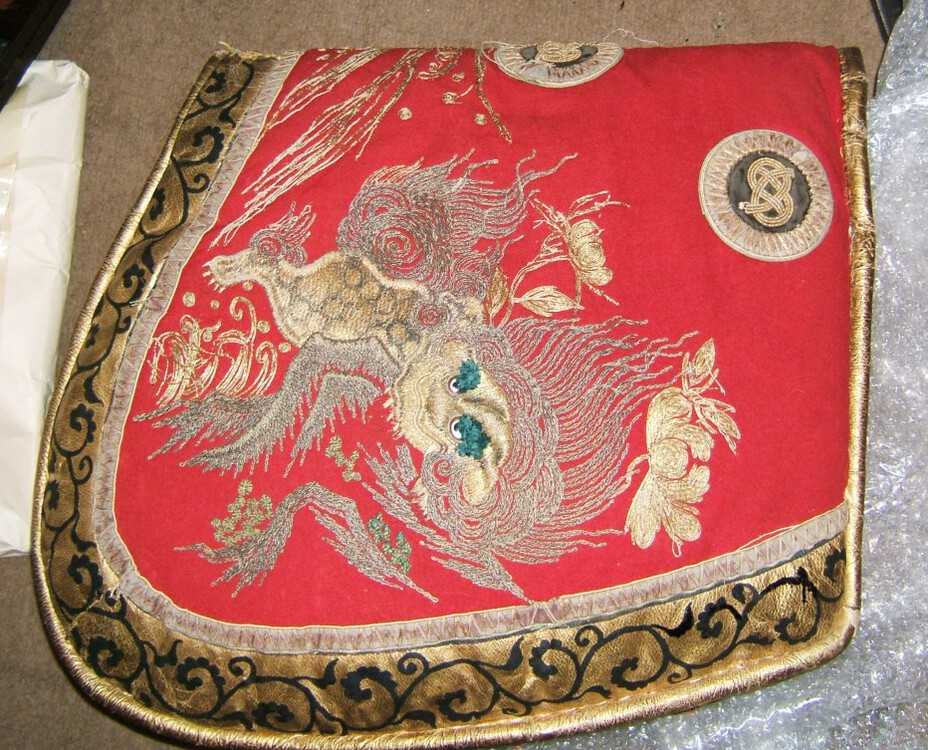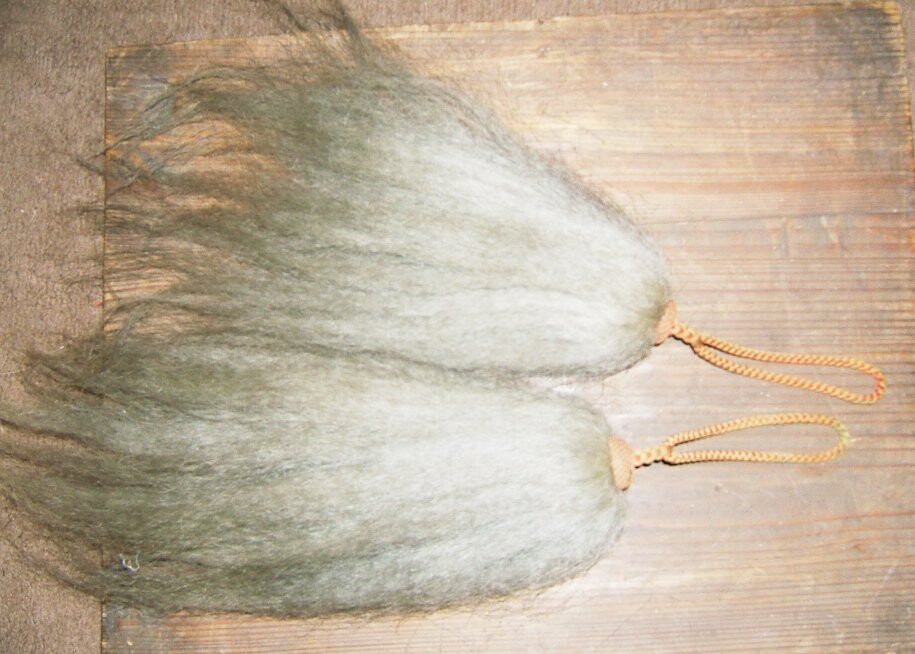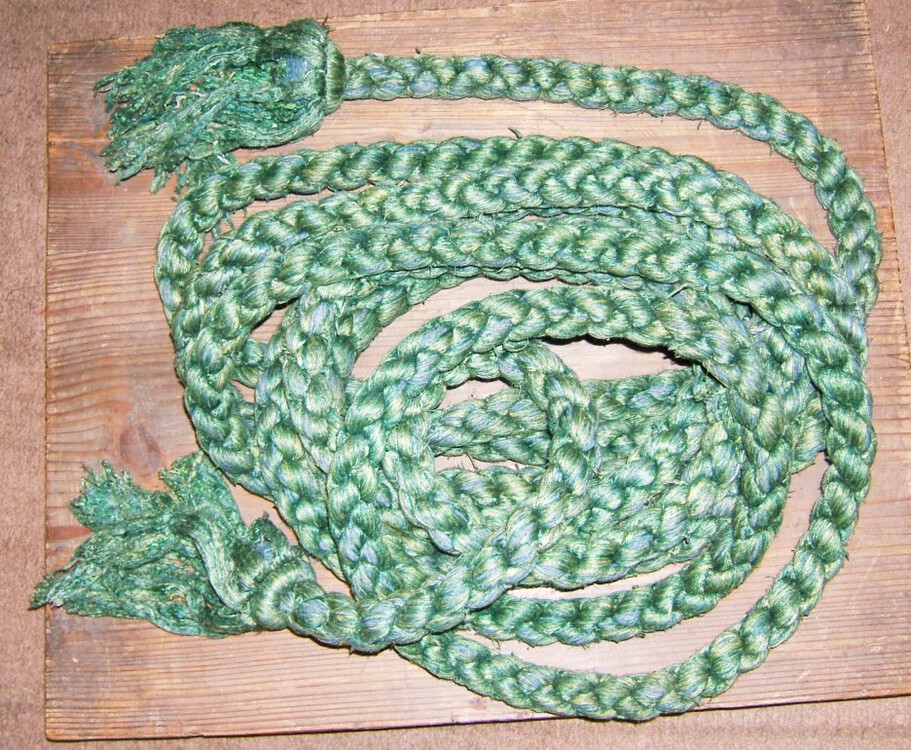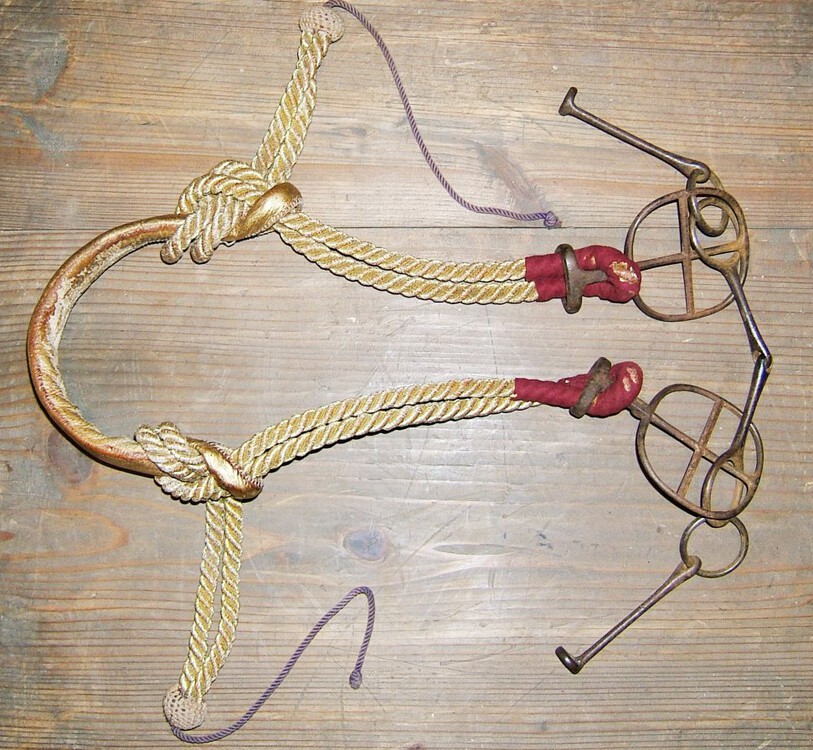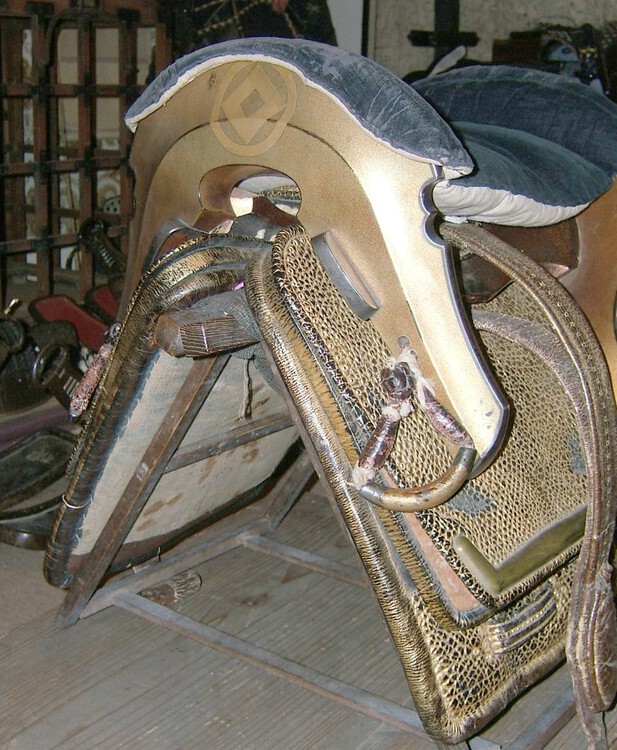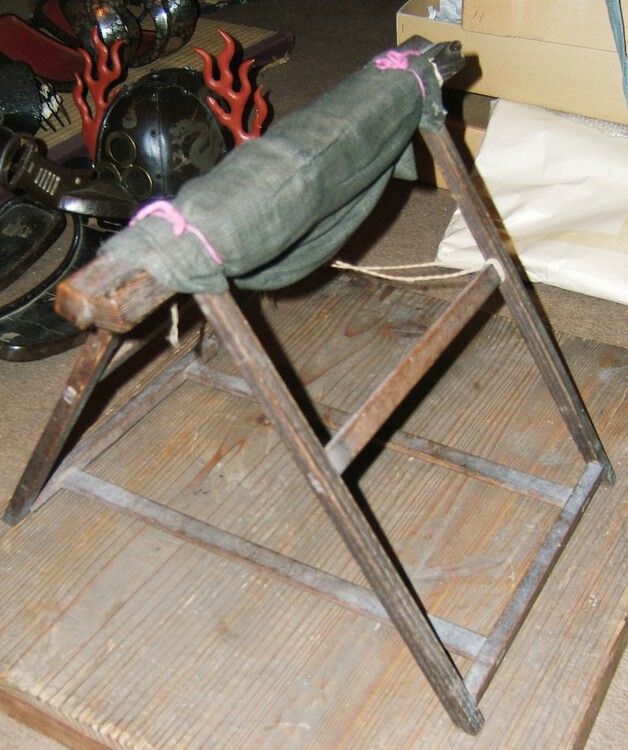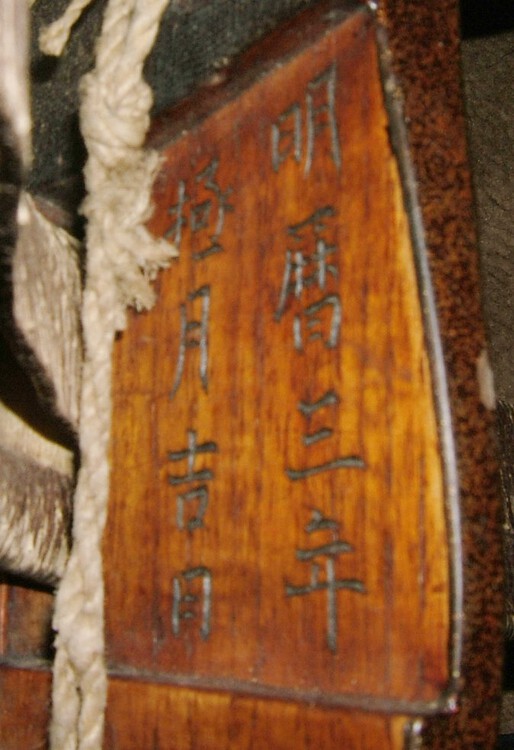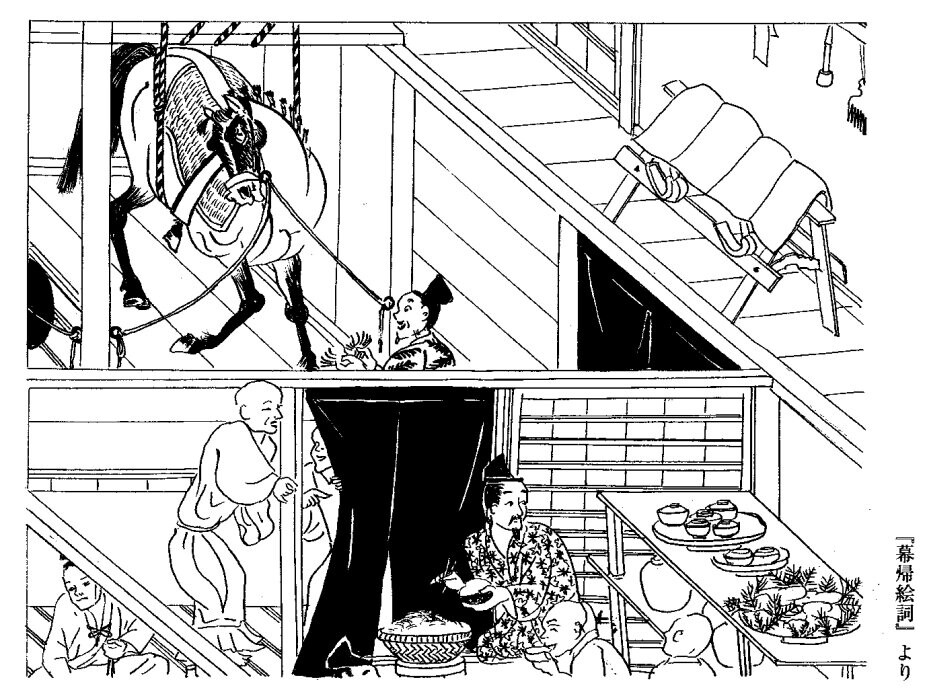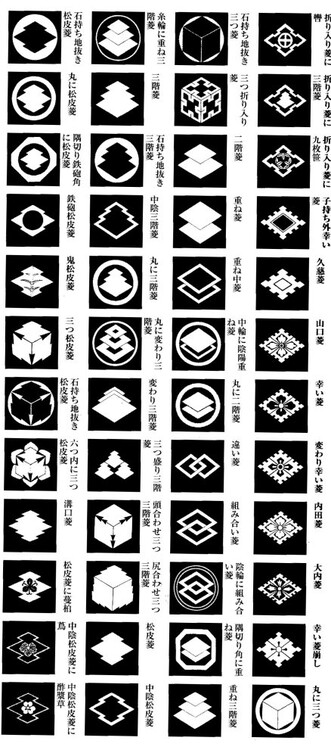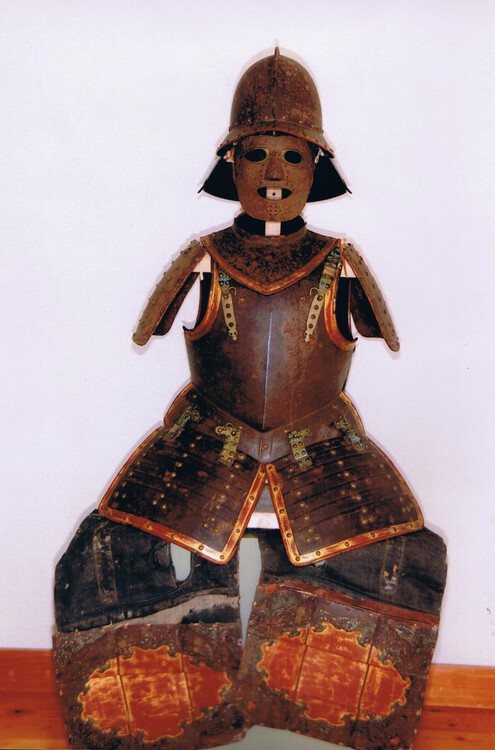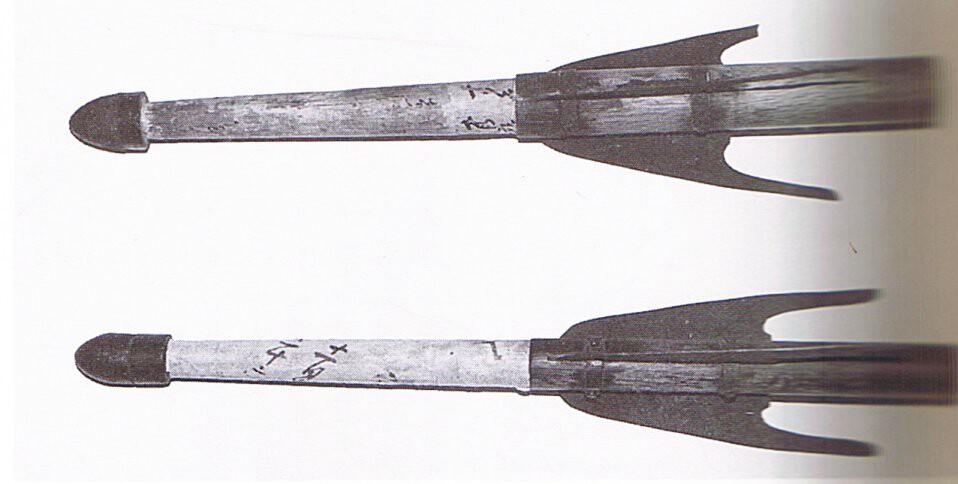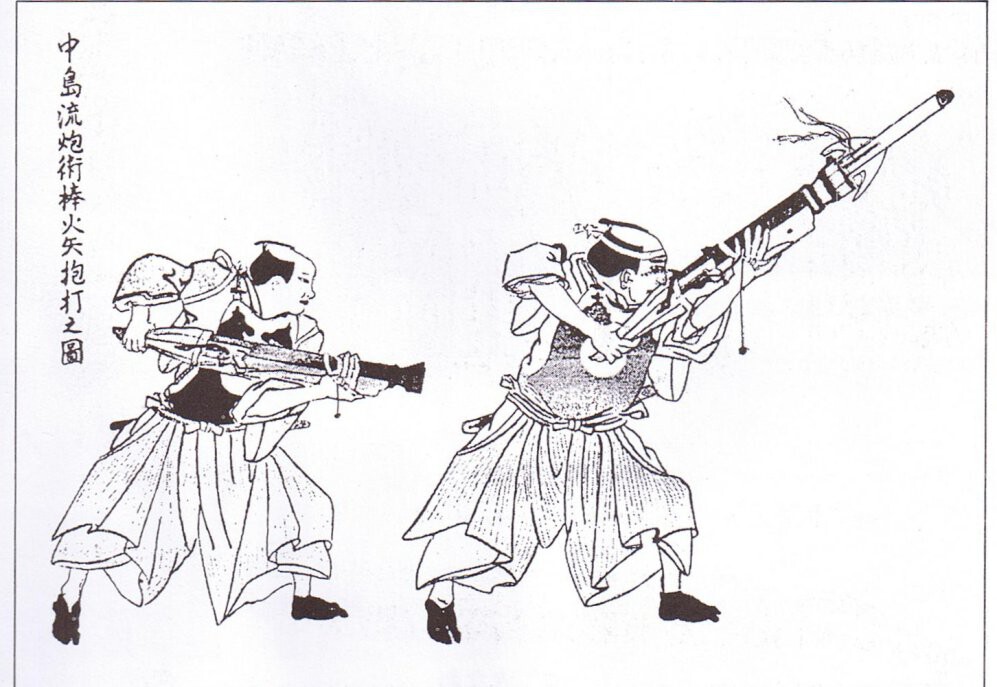
IanB
Members-
Posts
1,778 -
Joined
-
Last visited
-
Days Won
23
Everything posted by IanB
-
Richard, Well done - spot on. Now consider the age. Look at the chisel cuts and estimate how corroded or eroded they are. Same with the peg hole, mekugi ana. You are then in a position to consider which Tomoyuki may have made it. Ian bottomley
-
Not Nihonto but it is Samurai
IanB replied to jason_mazzy's topic in Auctions and Online Sales or Sellers
Lorenzo - Great video - I recognised one of the armours, it used to be in Arashiyama, Kyoto, then I was offered it. Small world. Eric, Nice armour. I have one in black with the kamon of the Date family on the crupper. It has a remarkable feature in that scales drop off every time you look at it. Ian B -
Please identify this if it is japanese
IanB replied to jason_mazzy's topic in Auctions and Online Sales or Sellers
Jason, Definitely NOT Japanese. If you look carefully, the hilt ornament is a monogram surmounted by a crown. I cannot see the decoration on the shell-guard properly but I can see a sceptre being held by I think and eagle. My guess is German / Austrian / Bohemian or similar. This kind of sword was turned out in vast quantities in places like Solingen during the 19th century for clients all over the world, each decorated to suit the government or ruler of the client country. Ian Bottomley -
Not Nihonto but it is Samurai
IanB replied to jason_mazzy's topic in Auctions and Online Sales or Sellers
Eric, Your small purple tassels could well be for the bit. It looks as if similar ones were used to attach the bit to the bridle, although those I have seem rather too delicate. Your ropes are clearly for the same purpose as mine. Initially I thought they were for the grooms to lead the horse with but they are far too massive - you could dock a ship with them. I think they are stable ropes. Ian -
Not Nihonto but it is Samurai
IanB replied to jason_mazzy's topic in Auctions and Online Sales or Sellers
If you are a horse freak I would highly recommend Sasama's 'Nihon no Kassen Bugu Jiten' (ISBN 4-7601-1705-9). This has sections on archery, guns, banners, camp equipment etc and everything to do with horses. It explains how to tie all the bits of a harness together as well as details of different breeds of horse, colourings, types of harness and so much more. John - Thank you for the kanji. Eric - love the pack saddle. I assume the bit is for a pack animal since there are no arms for reins. Ian B. -
Not Nihonto but it is Samurai
IanB replied to jason_mazzy's topic in Auctions and Online Sales or Sellers
After a change of batteries, herewith a few more bits: The crupper cover is of Dutch-cloth embroidered in gold with a gilded leather border lacquered with karakusa. As said, it is about 3" thick. The shishi has glass eyes and long eyelashes in blue-grey silk. The two tassels are of yak hair and red silk and hang either side of the bit from the arms that take the reins. Those worn by European cavalry, usually one attached to the bridle, were to stop a cut to the horse's windpipe. This is one of the two identical hemp ropes that I think were for use in the stables. Finally the posh bridle in very stiff gold rope with a gilded leather brow band. Ian -
Not Nihonto but it is Samurai
IanB replied to jason_mazzy's topic in Auctions and Online Sales or Sellers
Piers, Yes, all the loops are present. The ones attached, by hemp cords, are in silver with gold lacquered middle sections. There is also a set of four large embossed copper disc shaped ones with silk cords. These look as if they were gilded at one time but are now rubbed to bare copper. I suspect they were used for special occasions. Ian -
Not Nihonto but it is Samurai
IanB replied to jason_mazzy's topic in Auctions and Online Sales or Sellers
As promised a couple of shots before the batteries gave out. The saddle still has its velvet covered padded cover, no doubt used often since without it they are veritable b*ll-breakers. This has had modern over-sewing using a machine, but I think it of some age. The saddle is dated 3rd year of Meireki. I also show the little stand on which it sits nicely in its box. Ian B. -
Not Nihonto but it is Samurai
IanB replied to jason_mazzy's topic in Auctions and Online Sales or Sellers
Several years ago I bought the tout-ensemble for a horse from a friend in Kyoto. If memory serves he told me it came from Kyushu somewhere. It is housed in two large pine storage boxes that sadly bear no inscriptions but are of some age. In one was the saddle and stirrups on an original stand, in the other everything else. Most perplexing were two long thick hemp ropes with tasselled ends. I am still not absolutely sure what they are for but I think they are for tying the horse to a beam in the stables to stop it lying down. I append an image showing this. Apart from the usual bridle, breast and crupper straps, in Dutch-cloth with silk fringes, there is a second bridle in gold 'rope', reins, a small halter, alternative saddle-rings, san shaku gawa, yak-hair tassels to attach to the bit, a riding whip and a large elaborately embroidered and heavily padded bum-cover that ties to the crupper straps. This thing is about 3" thick and must have given the horse the most peculiar outline. About two days ago I slung out photos of all the pieces on the basis that I could always take some more - doesn't it always happen. I will charge up the camera and do a few pics today. Ian Bottomley -
-
Not Nihonto but it is Samurai
IanB replied to jason_mazzy's topic in Auctions and Online Sales or Sellers
All, There is in fact considerable lacquer loss on the inside right of the cantle and flaking on the inside left. There also seems to be damage to the kamon on the pommel. What is happening on the unseen areas? I think I would like to see a little more before bidding. A few years ago I finally achieved an ambition to have a display of a mounted Japanese warrior wearing armour in the Oriental Gallery of the Royal Armouries. For this I needed a replica harness, silk fringes, tassels and all. To this end I ordered a replica set from a firm in Japan, including a fibre-glass saddle and cast aluminium stirrups. When it arrived I was amazed just how good their products were. Instead of the expected replica, they sent a real old saddle, decorated with cranes in makie, presumably because its value was little different from a replica. Ian Bottomley -
Ford, Point taken. I will dwell on this for a while. Ian B
-
Few would dispute that during the period that Boxer calls 'The Christian Century', foreign objects and imported materials had a considerable influence on the Japanese. Not only were actual foreign objects imported in some quantity, but aspects of them were adopted into Japanese made products. I saw for myself on the site of Sendai castle, quantities of German enamelled glassware fragments being excavated. In my own field of interest, examples of European arms and armour were imported, being adopted and adapted to Japanese taste. Quite a few namban gusoku survive, generally associated with high ranking people, to illustrate how highly they were regarded. Several of the features of these armours were quickly adopted by Japanese and incorporated in their traditional products and continued to be until the end of the Edo period: solid plate do acquired a medial ridge, the fukurin around the edges of armour became 'roped' in imitation of European armour, ruffs were fitted to the collars of armours and a lot of mail imitated the 4-in-1 European pattern. Armours also began to incorporated exotic foreign products such as Indian cottons, velvet and especially woollen cloth. I attach a photo of an armour recently discovered on Hirado that is made up from two Dutch pikeman's armours. Notice how the haidate, almost certainly Kaga work, is decorated with a lacquered cartouche that may well have originally born a VOC or IHS monogram. I have already mentioned the Matsura aikuchi I bought for the Royal Armouries whose blade was created by cutting down a German sabre or hanger blade. That still bears traces of the Solingen maker's name and the date 1625 or 1635 in the fuller. I suspect both this armour and sword formed part of a gift to the local daimyo since their dates coincide so closely. Following sakoku, the availability of foreign material dwindled, but foreign ideas and some exotic products still trickled in through Dejima and its Chinese equivalent. Karamonoya, shops exhibiting and selling foreign goods, existed in several localities and Dutch studies in science, medcine, botany and so forth continued and was published. This influx of ideas can be discerned on lacquer, ceramics, netsuke, textiles and so much else. I can recommend 'Bridging the Divide' edited by L. Blusse, W. Remmelink and I. Smits, Hotei Publishing, ISBN 90-74822-24-X which contains essays on many aspects of these interactions. Ian Bottomley
-
This Week's Edo Period Corner
IanB replied to Bugyotsuji's topic in General Nihonto Related Discussion
Piers, Thanks for that point about the string to open the pan - something I have not heard of. On looking closely I think you are right that it isn't being used as a plumb line. Was I influenced by that scene in Kagamusha? Probably!! Eric, These guys are wearing muneate. I hope the guy on the right lifted his head before firing otherwise I suspect the recoil might have re-arranged his features. Ian -
This Week's Edo Period Corner
IanB replied to Bugyotsuji's topic in General Nihonto Related Discussion
Here are another couple of bohiya. Note two small points: All these museum ones (that are presumed to be genuine), have the upper section considerably reduced in diameter to allow for the coiled rope. They also, for some reason that defeats me, have that section wrapped with paper. I have also read somewhere that some had the upper part in the form of a paper tube stuffed with powder and shredded hemp rags. The idea being that when ignited, by a fuze, it burst and sent smouldering rags all over the place. I've no idea where I read this so I cannot quote a reference. I also include another image of a guy firing one. He is also holding a plumb line to judge elevation. Ian Bottomley -
An Interesting 8 Monme Tanegashima
IanB replied to watsonmil's topic in Tanegashima / Teppo / Hinawajū
I'm delighted to see I was wrong. There is a link to the Ii with the Nichiren Ian Bottomley -
An Interesting 8 Monme Tanegashima
IanB replied to watsonmil's topic in Tanegashima / Teppo / Hinawajū
Bingo!!. First try. Go to nichirenshu.org and there is the kamon on the title page. Ian -
An Interesting 8 Monme Tanegashima
IanB replied to watsonmil's topic in Tanegashima / Teppo / Hinawajū
John, I was a bit surprised myself. I did check the kanji and that is what it says - Nichiren religion tachibana. Having said that, I couldn't find any Ii related material in which the well-head and tachibana were used in combination, only separately. What I need to do now is see if I can find any Nichiren reference with that kamon or a Nichiren adherent who used the 3-5 kirimon. Ian -
An Interesting 8 Monme Tanegashima
IanB replied to watsonmil's topic in Tanegashima / Teppo / Hinawajū
Ron, I fully accept that the Ii may well have been disgraced. My point was that a visit to Hikone Museum suggests they didn't have to sell much to keep alive. I have now found the book I was looking for (Eiyu tasa no Kamon). Even better I have found the second kamon on your gun where it is described as Nichiren shuu tachibana. Sadly it doesn't give any other information as far as I can see. Well well! Looks as if it may not have anything to do with the Ii after all. Ian -
THE PRESENTATION OF A SAMURAI SWORD
IanB replied to Stephen's topic in General Nihonto Related Discussion
Stephen, Brilliant!! Perhaps what delighted me most was to see that the Sandwich Islands were called by their proper name (named by Cook after the 4th Earl) at such a late date. Ian -
Stephen, I assume you mean was the sword made specifically as a gift. The answer is definitely no. This style of mounting was obviously made for the tourist trade with their implication that they had something to do with the ex-shogun. I have seen quite a few examples over the years, all using the exact same stamped brass plates with the Tokugawa kamon, all fitted onto the wood saya and tsuka by brass bands. Some appear to have been finished by gilding the mon and silvering the backgound but most I have seen have been just polished brass. I did see a tanto in which the brass bands were engraved with karakusa, presumably to made it a bit more appealing. I used to have a book written by the Bishop of Durham who visited Japan in the early Meiji period, but gave it to Nikko Toshogu since he devoted most of a chapter to visiting the shrine. He noted that the antique and curio shops in Edo / Tokyo had a surplus of armours and swords that they were struggling to sell at any price. He stated that he bought several armours and swords at ridiculously low prices and had them shipped home. Ian
-
Once the temperature had reach the point of decomposing the martensite, I would agree with you. However, I suspect that what caused the hagiri was the localised heating below this point causing localised expansion and the setting up of extreme stressing. Ian
-
Daimen, Both John and Nobody have pointed out my boo-boo with the date. I had quoted the terminating date for Eiroku and then just added the digit to that instead of the start year. As I said to John, time to drag me off to the retirement home for the terminally idiotic. Sorry Daimen Mea Culpa. Ian Bottomley
-
An Interesting 8 Monme Tanegashima
IanB replied to watsonmil's topic in Tanegashima / Teppo / Hinawajū
Ron, What a fascinating story and what a nice gun. The barrel is Kunitomo of course, as I suspect is the stock and lock. I once had the pleasure of meeting Dr Sato and he was most kind and helpful. As for the dealer in Gray's Mews, I am appalled. Now to the heraldry on the gun. The first kamon is the 3-5 kirimon used by everyone and his brother, the second appears to be a combination of two of the kamon used by the Ii family of Hikone. They normally seem to have used the 'well curb' on its own - in their museum in Hikone is the big red banner carried at Seki ga Hara that has this kamon in gold. Inside this is the tachibana kamon used by the family (because I'm decorating my study I have books all over the house and cannot get to the one I wanted to look at concerning the Ii family kamon so I'm having to work from memory - please forgive me). Ii Naomasa was one of Tokugawa Ieyasu's Shi Tenno and hence the family enjoyed a special status throughout the Edo period. I am not sure that the family had to sell of much during the Meiji period. Hikone Museum has all the armours, swords and every thing else for most if not all of the generations of daimyo. I think it was there where I was shown a set of 13 inro, made so that the daimyo could wear a different one each month (lunar calendar). Once I get sorted, I will search for my book with the heraldry for Naosuke. Ian Bottomley -
Damien, The inscription on the reverse, or ura side, of the tang is a date. It starts with the year period Eiroku, which began in 1558 and finished in 1569 / 1570. The name of the year period is followed by a number of the year in that era. In this case it looks like 2 so the blade was made in the second year of Eiroku or 1570. The small scratched mark inside the hilt fitting is probably nothing more significant than a mark made by the guy assembling the sword from parts - so that the right fitting ended up on the right hilt. Ian Bottomley


